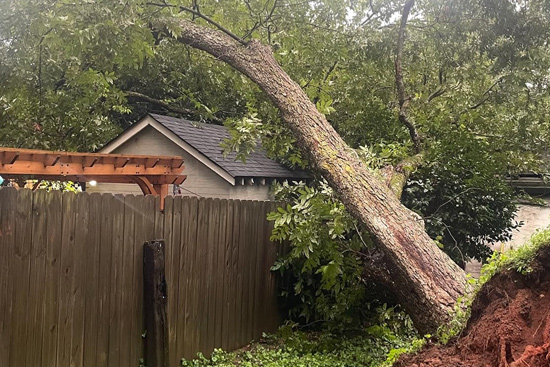Trees are an integral part of our environment, offering beauty, shade, and numerous ecological benefits. However, as much as trees enhance our landscapes, they can also pose serious risks to safety, property, and infrastructure when they become damaged or diseased. This is where emergency tree removal services come in, providing an essential solution to mitigate potential hazards. In this article, we’ll discuss what emergency tree removal is, when it’s needed, the process involved, and how to choose the right professionals for the job.
What is Emergency Tree Removal?
Emergency tree removal refers to the urgent and often unexpected removal of a tree or a portion of a tree due to an immediate safety hazard. This could be due to storm damage, disease, pest infestation, or a structural issue that poses a threat to nearby structures, people, or utilities. In many cases, trees may be left leaning precariously, with branches hanging dangerously or roots destabilized, putting homes, vehicles, power lines, or roads at risk.
Emergency tree removal is a specialized service that requires prompt attention to avoid accidents or further damage. It’s different from regular tree trimming or pruning services because it addresses situations where there is an imminent risk.
When is Emergency Tree Removal Necessary?
-
After Storms and High Winds: Severe weather conditions such as heavy rains, thunderstorms, or hurricanes can cause trees to fall or lose large branches. These fallen trees can block roads, damage homes, cars, and fences, or even cause electrical outages by downing power lines. In such cases, emergency tree removal is crucial to clear the debris and restore safety.
-
Tree Diseases and Pests: Certain diseases or pest infestations can weaken a tree’s structure, causing it to become unsafe. Insects like termites, beetles, and borers, or fungal infections such as root rot, can compromise the tree’s health. If these issues go unnoticed or untreated, a tree may eventually break, fall, or collapse, posing a hazard.
-
Tree Instability: Some trees may become unstable due to shallow roots, extreme weather, or other environmental factors. A tree that leans or has its roots exposed can be a safety concern, particularly if it’s near homes, power lines, or high-traffic areas. Emergency tree removal might be needed before the tree falls and causes serious harm.
-
Damage to Structures: In cases where a tree or large branches are in danger of falling on buildings, fences, or vehicles, immediate removal is often necessary. This is particularly important if the tree is leaning precariously or showing signs of splitting or cracking.
-
Obstruction of Essential Utilities: Trees or branches that interfere with power lines, water pipes, or telecommunications cables can be hazardous. Not only can they disrupt services, but they can also create fire risks. Emergency tree removal helps ensure that these lines are free from damage, maintaining both safety and functionality.
The Process of Emergency Tree Removal
Emergency tree removal typically involves several steps. Here’s an overview of what to expect:
-
Assessment: The first step is to assess the situation. A certified arborist or tree removal expert will evaluate the condition of the tree and determine the level of risk it poses. Factors such as the tree’s location, its structural integrity, and the damage it has sustained will guide the decision-making process.
-
Planning: Once the assessment is complete, the arborist will develop a plan to safely remove the tree. This may involve determining the best angle for cutting, the use of specific tools or equipment, and any safety precautions that need to be taken.
-
Execution: The tree removal process typically involves cutting the tree into manageable sections to minimize the risk of damage to surrounding structures. For larger trees, cranes or specialized equipment may be needed to safely remove the tree piece by piece.
-
Removal of Debris: After the tree has been removed, the cleanup process begins. This includes removing branches, trunks, and roots, and clearing the area of any debris that could pose further risks.
-
Post-Removal Assessment: Once the tree is removed, the area is inspected to ensure that all hazards have been eliminated. If necessary, additional steps such as stump grinding or soil treatment may be required to prevent new growth or erosion.
Choosing the Right Professionals for Emergency Tree Removal
When dealing with emergency tree removal, it’s essential to choose a reputable and experienced tree removal service. Here are some key factors to consider:
-
Certifications and Licenses: Look for a tree removal service that employs certified arborists and is fully licensed and insured. This ensures that the work will be done safely and professionally, with minimal risk to you or your property.
-
Experience: Choose a company with extensive experience in emergency tree removal. Experienced professionals will know how to assess potential risks and execute the job with precision.
-
Availability: Emergencies can happen at any time, so it’s important to find a service that offers 24/7 availability. Quick response times are critical in mitigating risks and preventing further damage.
-
Equipment: Ensure the company uses modern, well-maintained equipment. Large, fallen trees may require cranes, saws, or other specialized machinery to remove safely.
-
Customer Reviews: Check online reviews and testimonials from previous customers to gauge the quality of the service. A reliable tree removal company will have a good reputation for handling emergencies efficiently.
Conclusion
Emergency tree removal is a vital service that ensures the safety of people, property, and infrastructure when a tree becomes hazardous. Whether caused by storms, disease, or instability, removing a dangerous tree quickly and efficiently can prevent extensive damage and injuries. By choosing a professional tree removal service with the right qualifications and experience, you can rest assured that the situation will be handled with care, minimizing risk and restoring safety to your property.



